Select Language
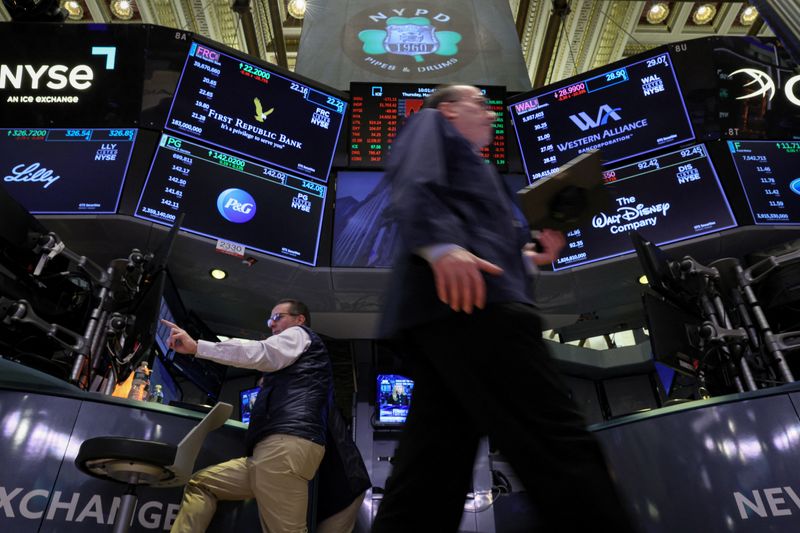
U.S. inflation data
Investors are awaiting Tuesday’s U.S. consumer price data for October, for an update on the Fed’s progress in its battle to keep lowering inflation from last year’s multi-decade highs.
Inflation is expected to have risen 0.1% on a monthly basis. September's CPI rose 0.4% on a surprise surge in rental costs, but also showed a moderation in underlying inflation pressures.
A sharper cooling could fan the peak rate talk, fuelled by October's employment report, which pointed to easing conditions in the labor market.
The U.S. is also to release producer price data along with retail sales numbers for October, which are expected to dip into negative territory after a string of solid monthly gains.
Other data due for release includes reports on industrial production, housing starts and initial jobless claims.
Fed speakers
Investors will get a chance to hear from several Fed officials during the week, including New York Fed President John Williams, Chicago Fed President Austan Goolsbee, Governor Philip Jefferson and Governor Michael Barr as policymakers weigh any further tightening ahead of their next meeting on Dec. 12-13.
Last Thursday, Fed Chair Jerome Powell said officials "are not confident" that interest rates are yet high enough to finish the battle with inflation. While the Fed does not want to overtighten policy, Powell said "the biggest mistake we could make is really, to fail to get inflation under control."
His comments were echoed by colleagues, with San Francisco Fed President Mary Daly saying Friday she is not ready to say yet whether the Fed is done raising rates.
Investors have been focused on benchmark Treasury yields, which have eased somewhat from 16-year highs as they assess whether rates have indeed peaked and when the central bank could start cutting rates.
Retail earnings
Third quarter earnings season is winding down, but several major retailers are due to report in the week ahead with investors on the lookout for indications on how consumer spending is holding up.
Home Depot (NYSE:HD) is due to report ahead of the open on Tuesday, followed by Target (NYSE:TGT) ahead of Wednesday’s market open, while results from Walmart (NYSE:WMT) and Macy’s (NYSE:M) are due out on Thursday.
Target has been struggling with higher costs and the big box retailer has made several cuts to its guidance, after warning earlier this year that “shrinkage” - goods that are stolen - is hitting its bottom line.
In contrast, Walmart shares hit record highs earlier this month boosted by growing revenues and profits which saw it handily beat expectations when it reported in August.
Other retailers reporting during the week include TJX Companies (NYSE:TJX), Gap (NYSE:GPS), and China’s Alibaba (NYSE:BABA).
U.S. government shutdown risk
The risk of a federal government shutdown is looming if lawmakers in Washington are unable to pass a measure to at least temporarily fund operations before Friday.
Hardline demands for steep spending cuts and policy riders including abortion restrictions have split Republicans for much of 2023, with Republican centrists pushing for a more bipartisan approach that can win support in the Senate.
U.S. House Speaker Mike Johnson unveiled a Republican stopgap spending measure on Saturday aimed at averting a partial shutdown, but the unorthodox plan quickly came under fire from members of both parties.
Fresh wrangling could renew concerns about governance in the world's biggest economy.
Oil price volatility
Oil prices gained about 2% on Friday as Iraq voiced support for OPEC+'s oil cuts ahead of a meeting in two weeks and as some speculators covered massive short positions ahead of weekend uncertainty.
Still, prices settled with weekly losses of 4%, their third straight weekly decline.
Concerns about the global demand outlook offset fears over potential production outages related to the Middle East conflict amid weak economic data out of China, the U.S. and the U.K. last week.
Energy traders are looking ahead to a meeting between the Organization of the Petroleum Exporting Countries and allies including Russia on Nov. 26.
Analysts think OPEC+ might cut supply further if prices continue to fall.
--Reuters contributed to this report

By Byron Kaye and Rishav Chatterjee
(Reuters) - Australia's No. 4 lender ANZ said on Monday that surging demand for its institutional banking services propelled its annual profit to a record but an aggressive campaign to sell more mortgages flattened its margin, sending its shares lower.
As Australia's banks redirect focus away from their traditional earnings engine of mortgages where interest rate hikes have spurred competition, ANZ has benefited from an institutional payments platform that it says processes some of the world's biggest cross-border transactions.
That pushed operating income from the bank's institutional unit in front of its retail unit, by dollar value, from March to September, and helped the Melbourne-listed company grow annual profit 14% to A$7.4 billion ($4.7 billion), just missing a Visible Alpha consensus forecast of A$7.56 billion.
But analysts expressed concern about a faster-than-expected narrowing of profit margin from the bank's retail unit, the only one of Australia's so-called "big four" lenders which has persisted with offering cash handouts to lure mortgage customers looking for a cheaper deal.
Even as ANZ's institutional division grew its net interest margin (NIM) - the interest it collects on loans minus interest paid to deposit-holders - the bank's overall NIM declined 10 basis points to 1.65% in the six months to September, more than NIMs reported this month by rivals Westpac and National Australia Bank (OTC:NABZY).
ANZ shares were down 3.1% by midsession, against a flat overall market, amid worries about whether the bank was sacrificing profitability for mortgage volume which had lagged in previous years.
"We expect questions to be raised about margin/volume management in the Australia retail division, particularly due to NIM pressure stemming from ANZ's relatively aggressive growth in Australia home lending," E&P Capital analyst Azib Khan said.
ANZ CEO Shayne Elliott denied forgoing margin to grow mortgages faster than the market, and challenged comments from other banks which have said they were intentionally slowing mortgage growth while competition eroded profit.
"The fact that others have stepped back from the market: I think there's a lot of people rationalising their loss of share," he said on a call with journalists.
"That's for them to answer, not me. All I know is we've been winning more customers than we have historically."
ANZ declared a final dividend of 94 Australian cents per share, up from 74 cents a year ago.
(This story has been refiled to correct typo in the headline)
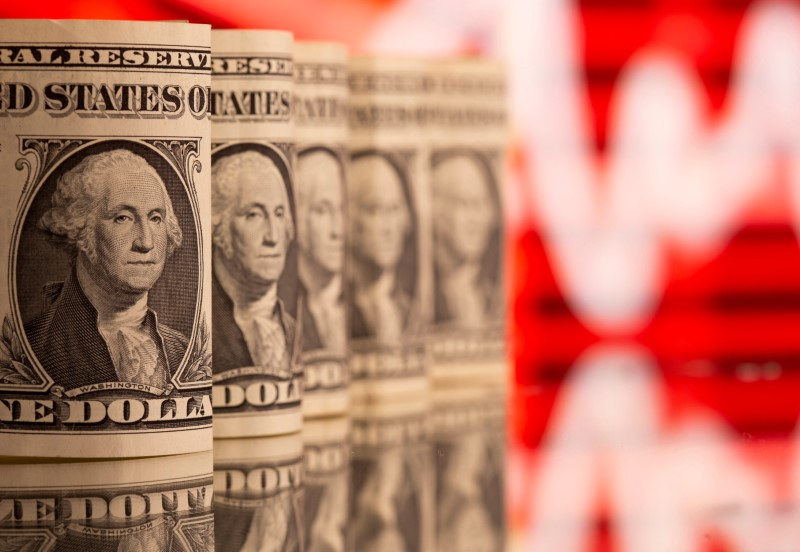
By Brigid Riley
TOKYO (Reuters) - The dollar was steady on Monday as traders awaited another batch of inflation data from the United States that is expected to offer further clues this week on whether the Federal Reserve has more work to do to tame price pressures.
The Japanese yen remained vulnerable, hovering not far from a one-year low against the greenback as markets remained on watch for possible intervention by Tokyo.
The focus for most traders will be firmly on U.S. consumer price index (CPI) numbers due on Tuesday after the Fed's policy meeting this month tempered its hawkish stance although Fed Chair Jerome Powell last week hinted that the battle against inflation may not be over yet.
Retail sales the following day will also provide more information on the state of demand in the U.S. economy, which has shown signs of resilience in the face of high borrowing cost.
"We expect the USD to remain on a strong footing," Lenny Jin, Global FX Strategist at HSBC, wrote in a note, citing the U.S. economy's continued growth outperformance as one crucial factor.
HSBC expects November U.S. core CPI to remain unchanged compared to last month, "while further disinflation signals may only come in February 2024," said Jin.
Elsewhere, market reaction was muted to news announced shortly before foreign exchange trading closed in New York on Friday that Moody's (NYSE:MCO) lowered its outlook for the U.S. credit rating to "negative".
The dollar index, which measures the dollar against a basket of currencies, was last mostly flat at 105.80.
There was little relief for the yen, however, which has come under pressure from rising U.S. Treasury yields and continued dollar strength.
The Japanese currency was trading around 151.58 yen against the dollar on Monday, just under a one-year low of 151.74 hit at the end of October.
A hot number from one of the U.S. economic data releases this week "would certainly do the trick" in pushing dollar/yen above 151, said Tony Sycamore, a market analyst at IG.
"Alternatively, a continuation of the more supportive risk backdrop would likely entice carry buyers to add to positions and test the measure of the (Bank of Japan)."
Elsewhere, sterling stood at $1.2228 to the dollar, firm ahead of UK average weekly earnings data on Tuesday and a CPI reading on Wednesday.

LONDON (Reuters) - Asking prices for homes in Britain have fallen at their fastest pace in five years for the time of year, property website Rightmove (OTC:RTMVY) said on Monday, underscoring how rising borrowing costs have caused a housing market slowdown.
Average asking prices for homes fell by 1.7% between Oct. 8 and Nov. 4, a bigger fall than is typical for the pre-Christmas period, Rightmove said.
The Rightmove data is not seasonally adjusted.
"Buyers are still out there, but for many their affordability is much reduced due to higher mortgage rates," Rightmove director Tim Bannister said.
Britain's housing market boomed during the COVID-19 pandemic but lost much of its momentum as the Bank of England raised interest rates 14 times in a row between December 2021 and August this year. It paused its increases in September.
Rightmove said asking prices were 3% below May's peak while agreed sales were 10% below their pre-pandemic level in 2019, a less severe fall than in the month to early October. There were signs that the shortage of homes for sale was easing with properties for sale only 1% behind their 2019 level, it said.

LONDON (Reuters) - Markets are keen to trade rate cuts and big central banks are pushing back, shining a new light on upcoming data in that tug of war.
China continues to battle its property demons while it is Italy's turn to be in the eye of the ratings agencies.
Here is your week-ahead primer from Lewis Krauskopf in New York, Kevin Buckland in Tokyo, Danilo Masoni in Milan and Alun John and Dhara Ranasinghe in London.
1/ INFLATION WATCH
A slew of Federal Reserve policymakers including boss Jerome Powell say they are still not sure that rates are high enough to finish the battle with inflation.
Traders, anticipating roughly three quarter-point Fed rate cuts next year, will now turn their attention to Tuesday's inflation data to confirm their view on the outlook.
The October consumer price index is expected to have climbed 0.1% on a monthly basis, according to a Reuters poll. September's CPI rose 0.4% on a surprise surge in rental costs, but also showed a moderation in underlying inflation pressures.
A sharper cooling could fan the peak rate talk, fuelled by October's employment report, which pointed to an easing in labor markets.
A federal government shutdown meanwhile looms if lawmakers in Washington are unable to pass a measure to at least temporarily fund operations before a Nov. 17 deadline.
Fresh wrangling could renew concerns about governance in the world's biggest economy.
2/ TROUBLE AT HOME
The question of who will be left holding the bag filled with China's property mess may have gone some way to being answered - much to the chagrin of Ping An shareholders.
Reuters reports that Beijing asked the insurer to take control of ailing Country Garden, China's biggest private developer.
Ping An shares dived to one-year lows, in spite of the company's denials. Worries about the sector continue to weigh.
Government measures to shore up the economy have repeatedly fallen flat this year, which has not deterred China's central bank from professing the 5% growth target can be achieved, a view the IMF shares.
Data has pointed the other way, with more evidence of slowing factories and tepid consumption. Markets will see Wednesday if that trend continues, with October retail sales and industrial production data.
3/ ONCE BITTEN
The robust dollar suddenly appears vulnerable to the push and pull in the market's Fed rate cut bets.
A bounce thanks to Fed chief Powell pushing back on talk that rates have peaked may not last as dollar bears grow confident that rate cuts are likely next year.
Take the latest Reuters poll: nearly two-thirds of analysts say the dollar is likely to trade lower by year-end.
Long dollar positions are decreasing. SocGen reckons dollar/yen could fall back to around 145-150 after trading as high as 151.74 recently.
Rate-cut talk is dollar negative but a sharply slowing U.S. economy that hurts the world could quickly bring back demand for the safe-haven currency.
4/ SUNAK'S SCORECARD
UK inflation has been stickier than in most developed economies.
That is bad news for consumers, the Bank of England, and Prime Minister Rishi Sunak, who pledged at the start of 2023 to halve inflation, then running at over 10%, by year end.
October CPI data, due on Wednesday, will show whether Sunak is starting to get close to that goal. A fall from September's 6.7% is likely, but by how much?
The data could also help justify, or challenge, recent remarks from BoE chief economist Huw Pill that mid-2024 could be the time for rate cuts. Latest British jobs figures, retail sales and the producer price index are also on the calendar.
Euro zone flash third-quarter GDP data out on Tuesday is in focus given signs of economic weakness in Germany, the bloc's largest economy, and described by some this year as the "sick man of Europe."
5/ ITALY RISK
Italy is back on the worry list with many investors concerned about growing fiscal risks steering clear of big exposure to the euro zone's third-largest economy.
Moody's (NYSE:MCO), which rates Italy just one notch above junk with a negative outlook, reviews the sovereign on Nov. 17. Fitch's latest review is due after Friday's market close.
A Moody's downgrade is the bigger risk given its Italy outlook and such a move could see the closely-watched 10-year bond yield gap over Germany pop to 250 bps, with potential ramifications across the periphery.
Italian stocks meanwhile are trading at a 50% discount to world stocks, the widest gap since 1988.
There is a silver lining. Stronger balance sheets mean banks are less vulnerable to bond turmoil than in the past and with parts of the equity market so deeply discounted, some see a buying opportunity that cannot be ignored.
(Graphics by Sumanta Sen, Pasit Kongkunakornkul, Riddhima Talwani, Prinz Magtulis and Kripa Jayaram; Compiled by Dhara Ranasinghe; Editing by Tomasz Janowski)

BANGKOK (Reuters) - Thailand's government has scaled down only slightly its signature handout policy, its prime minister said on Friday, despite growing concerns over its viability and potentially negative impact on Southeast Asia's second-largest economy.
The government has decided to reduce the overall "digital wallet" amount to 500 billion baht ($13.98 billion), with the scheme available to 50 million citizens to spend in their local areas within six months, premier Srettha Thavisin told a press briefing.
The ruling Pheu Thai Party's controversial policy was initially set at 560 billion baht ($15.66 billion) to be given to the majority of Thais, at 10,000 baht each, to stimulate a sluggish economy.
The government had been expected to make a bigger reduction in the scale of the project, after warnings from economists and some former central bankers that it could be fiscally problematic and further stoke inflation.
The scheme's value is equivalent to about 3% of gross domestic product (GDP).
The decision came after a meeting to consider reducing its scope to apply to certain groups for people. The plan will be implemented next year, but no exact timeframe was given.
Srettha has been in power for two months and is pursuing policies to cut living costs, control household debt and jumpstart the economy through measures to boost tourism, a key driver of growth while exports struggle from weak global demand.
Last month, central bank Governor Sethaput Suthiwartnarueput said the bank's growth forecast of 4.4% in 2024 would be lowered if the handout plan was reduced.
The finance ministry predicts growth of 3.2% in 2024, excluding the effect of the scheme.
($1 = 35.76 baht)
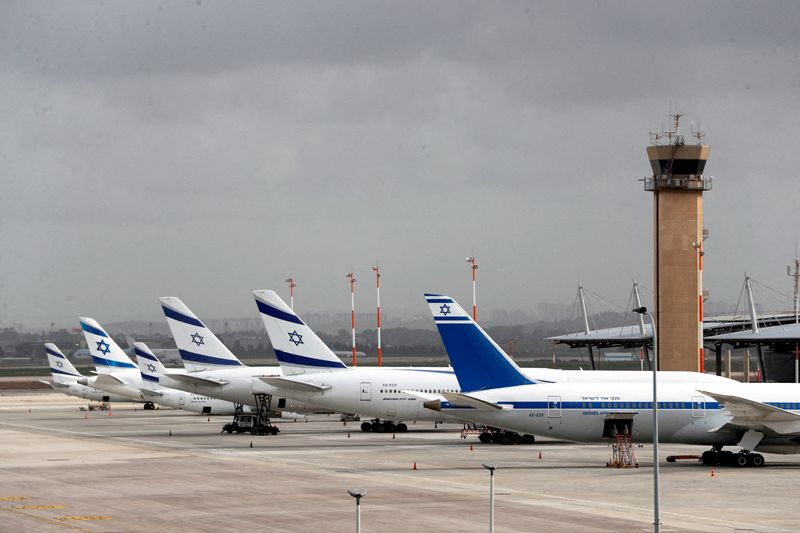
By Doyinsola Oladipo
NEW YORK (Reuters) - International flight bookings around the world have fallen since the onset of the Israel-Hamas conflict especially in the Americas as people cancel trips to the Middle East and around the world, according to travel analysis firm ForwardKeys.
Global travel demand has weakened since the Palestinian Islamist group Hamas killed 1,400 people in southern Israel on Oct. 7, and Israel responded with air and ground strikes on Gaza that Palestinian authorities say have killed over 10,000 people.
"This war is a catastrophic, heartbreaking, human tragedy that we are all seeing daily on our TV screens," said Olivier Ponti, vice president of insights at ForwardKeys in a statement. "That is bound to put people off (from) traveling to the region, but it has also dented consumer confidence in traveling elsewhere too."
International flight bookings from the Americas dropped 10% in the three weeks after the Oct. 7th attack, when compared to the number of tickets issued three weeks before the attack, according to flight ticketing data from ForwardKeys.
People in the Middle East have also been traveling less with international flight tickets issued in the region having fallen 9% in the same period. International flight bookings to travel to the region plummeted 26% in the three weeks following the attack.
International flight bookings fell 5% across regions on average, impacting the global rebound in international travel from the pandemic.
Bookings one day before that attack showed that global air travel in the last quarter of the year would recover 95% of 2019 levels, but as of late October the outlook has fallen back to 88%, Ponti said.
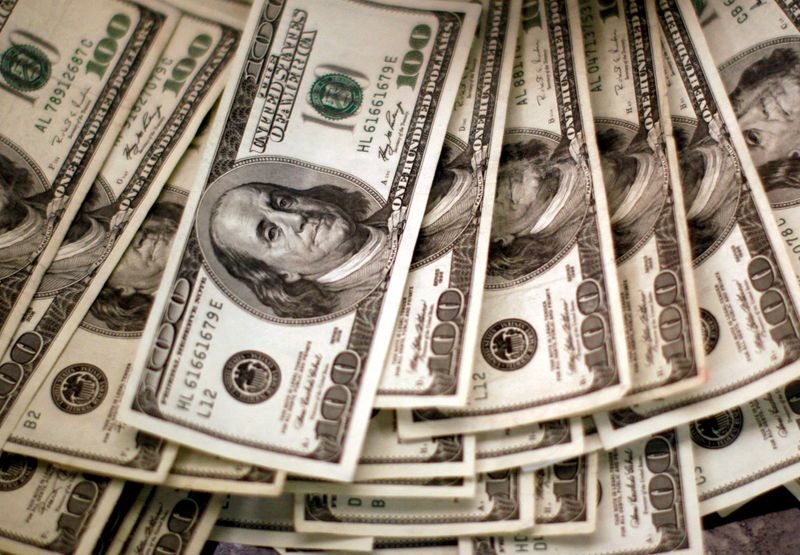
By Rae Wee
SINGAPORE (Reuters) - The dollar was headed for its best week against the yen in three months on Friday, after Federal Reserve Chair Jerome Powell and a chorus of Fed officials poured cold water on market expectations of a peak in U.S. rates.
In cryptocurrencies, bitcoin and ether held near multi-month highs, with renewed speculation over the imminent approval of an exchange-traded bitcoin fund breathing new life into the digital assets.
A slew of Fed policymakers including Powell on Thursday said they are still not sure that interest rates are high enough to finish the battle with inflation, comments taken as hawkish by markets and which sent the greenback rising.
The dollar stood near a one-year high at 151.38 yen on Friday and touched one-week highs against the Australian and New Zealand dollars.
"Powell's speech was quite hawkish, and that just really hit sentiment," said Tina Teng, market analyst at CMC Markets (LON:CMCX).
The remarks from Fed officials came a week after the U.S. central bank left interest rates steady and cemented expectations that rates could have peaked, causing the dollar and Treasury yields to tumble in the aftermath.
The greenback, however, regained its footing this week and was eyeing a weekly gain of roughly 1.3% against the yen, its best performance since August.
"Dollar/yen did trend higher this week and it's now back above 151. It does raise the risk of the BOJ stepping into the (forex) market to strengthen the yen, but I think markets are expecting no intervention unless dollar/yen moves to about 152," said Carol Kong, a currency strategist at Commonwealth Bank of Australia (OTC:CMWAY).
The Aussie and the kiwi were likewise headed for a 2.4% and 1.8% weekly decline against the dollar respectively, also their steepest drop in months.
"Even though we don't expect Powell to deliver on the tightening bias, that tightening bias does support the dollar," said Kong.
The Australian dollar last stood at $0.6359 after slipping to a one-week low of $0.6352 earlier in the session, while the New Zealand dollar was last at $0.5893, having similarly hit a one-week trough of $0.5886 earlier.
Falling oil prices and a faltering economic recovery in China have also kept a lid on the Antipodean currencies.
Australia's central bank, in its quarterly Statement on Monetary Policy released on Friday, warned there were risks of further upside surprises to inflation following its latest hike in interest rates, while also raising forecasts for economic growth and employment.
Elsewhere, the euro steadied at $1.0668, while sterling slipped 0.02% to $1.2218. They were both on track to lose 0.56% and 1.3% for the week, respectively.
Bitcoin, the world's largest cryptocurrency, meanwhile held near an 18-month high and last bought $36,519, having peaked at $37,978 in the previous session, its highest level since May 2022.
The second-largest cryptocurrency Ether last stood at $2,102.90, after similarly jumping to its highest since April of $2,131.50 in the previous session.
Prices of the digital assets have surged on swirling speculation of an imminent approval of BlackRock (NYSE:BLK)'s spot bitcoin ETF, with the asset management giant also having registered to create an ethereum trust.
"The potential approval of spot ETFs by the (U.S. Securities and Exchange Commission) could significantly impact the cryptocurrency sector," said Carl Szantyr, managing partner of digital asset hedge fund Blockstone Capital.
"Such an endorsement would make it more accessible for institutional investors to enter the crypto space, likely boosting demand and subsequently, prices."
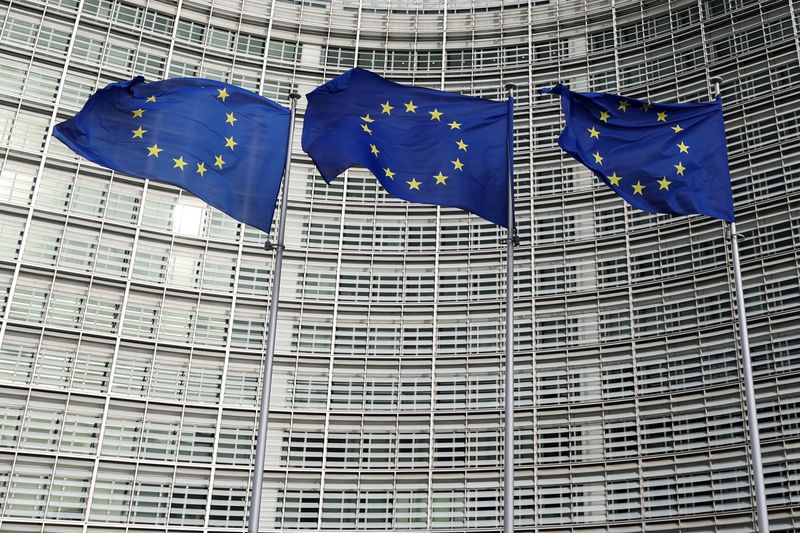
By Huw Jones
LONDON (Reuters) - Regulators should keep on open mind when writing rules for the world's $239 trillion "non-bank" financial sector to avoid one-size fits all approaches, the EU's top securities watchdog said.
Non-banks, a sector which includes hedge funds, real estate funds, insurers and private investments and now account for about half of the world's financial sector, are firmly in the regulatory limelight.
This follows redemption-related stresses among money market funds (MMFs) during a "dash for cash" when economies went into pandemic lockdowns in March 2020, and last year with liability-driven investment (LDI) funds in Britain.
European Securities and Markets Authority (ESMA) chair Verena Ross said regulators are closely examining non-banks' leverage, liquidity and their connectivity with banks.
"We must not equate non-banks with investment funds, it's important to keep an open mind," Ross told Reuters on Thursday, adding: "Each sector must be looked at quite specifically."
Pressure for action rose after the U.S. Federal Reserve had to inject liquidity into markets to help MMFs in March 2020. The Bank of England then had to intervene after LDI funds struggled to meet collateral calls in 2022.
The U.S. Financial Stability Oversight Council(FSOC) this month published a framework for analysing risks in non-banks.
Meanwhile, the BoE has called for tougher liquidity rules for MMFs, but sterling-denominated funds are listed in European Union countries such as Ireland and Luxembourg, where the rules are written by the 27-member bloc.
MMFs come under UCITS or AIFMD rules, recently updated to bolster resilience, Ross said.
There are also separate bespoke EU rules for the sector
"MMFs have been identified as one area there is clearly a need to act, but that need to wait for the next Commission. We still believe it's important to pick that up, " Ross said.
Although ESMA has already recommended changes to MMFs to bolster their resilience in stressed markets, a new European Commission will not be in place until next autumn, meaning reform is unlikely before 2025.
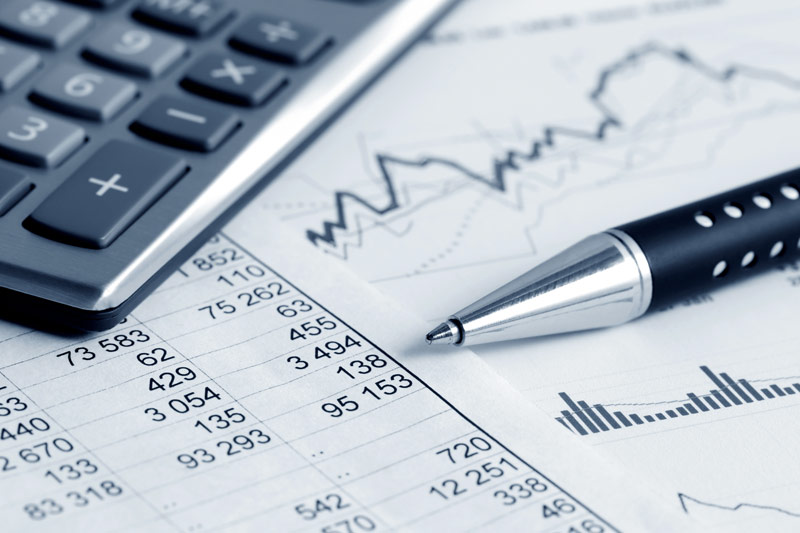
Ukraine and the International Bank for Reconstruction and Development (IBRD) solidified a $550 million agreement to support the nation's agricultural sector, which has been significantly impacted by the ongoing conflict with Russia. The funding is part of the ARISE project, initiated in October 2023, and aims to provide financial aid to over 90,000 farmers.
The World Bank forecasts a 3.5% economic growth for Ukraine following a severe slump in 2022 due to the war. This new accord aims to mitigate the financial strain and ensure continuous financing for agricultural enterprises despite the aggressive war that caused significant agricultural losses.
The finance package consists of a $230 million loan from the ADVANCE Ukraine Trust Fund, backed by Japan, and a $320 million grant from URTF. It also includes a provision of $500 million earmarked for the Affordable Loans 5%-7%-9% Program for the years 2023-2024. This program is designed to lower borrowing costs for agricultural businesses.
In addition to loans, a $50 million provision is available for grants that these enterprises can access. These funds are expected to enhance financing access for agricultural producers through concessional loans and grants.
Finance Minister Sergii Marchenko underscored the critical importance of this funding due to the war's devastating impact on agriculture and ensuing food nutrition security concerns. Since Russia's full-scale invasion in February 2022, Ukrainian entities have dealt with immense financial strain.
In response to these challenges, Ukrposhta secured a mortgage agreement with the Ministry of Finance to meet €30 million guarantee obligations. Since the onset of hostilities, the World Bank has mobilized over $38 billion for Ukraine, disbursing more than $29 billion by October 30, 2023.
This article was generated with the support of AI and reviewed by an editor. For more information see our T&C.

